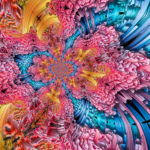The three popular styles for growing are outdoor, indoor and greenhouse. The set-up costs, operation liabilities, and end results will of course vary between the three. At the Night Market, you may have noticed an update as our products now specify the growing method in the titles. In this article, we explore those growing methods further.
Since outdoor is only an option in areas with proper climate and rainfall patterns, greenhouse and indoor grows have become overwhelmingly popular. This doesn’t mean one option is definitively better than the other, as each has their own unique pros and cons. When it comes to growing marijuana, there are even more options that can make things easy or very complicated. High-tech hydroponics system that takes skill to keep running, and a multitude of different ways that bear a combination of luck and knowledge to pull off. There are so numerous different ways to grow cannabis that it’s nearly impossible to keep up with them all, but there’s one method that’s catching on, and it results in what many call light dep weed.
What’s light dep weed?
Light dep cannabis is just as it sounds, a bud that has been produced by putting plants through light deprivation during the right stages of its grow cycle.
What’s light privation?
Light deprivation is similar to the strict lighting schedules certain growers use on indoor crops, with scheduled light and dark periods attempting to trick a plant into entering the flowering stage on demand. In practice, light deprivation for cannabis plants involves large greenhouses and tarps to keep tight control over the amount of light exposure, as well as grow lights to supplement as needed.
The method was designed with greenhouse growers in mind because cannabis plants require an uninterrupted temperature and humidity level that is very difficult to reproduce in nature. Rather than an even 12-12 or any other simple division, light deprivation requires intermittent light and dark sessions, which is why greenhouse growers will typically use blackout tarps to aid them in achieving total darkness.
Light dep weed: Benefits
The benefits of light dep weed are lost on consumers, as they do not see any advantage aside from a slightly cheaper product. However, the producers of cannabis who utilize this arduous technique say that they see such excellent yields that the reduction in the overall value of the raw product itself is more than worth it. Using light deprivation also makes large scale grow operations more energy-efficient, requiring less overall power and water consumption, which means that it’s good for the environment too.
The popularity of light deprivation
On the Pacific Coast the significant increase in the popularity of this growing technique is impossible to neglect, with a sudden influx of light dep weed in nearly every corner of the legal markets. Unfortunately, rigorous and strict regulations in Canada and other countries have made it impossible for most cultivators to put this option into practice, but it’s likely only a matter of time before they too accept the benefits of this methodology.
The higher the risk, the greater the reward
Light deprivation is no easy task, and it doesn’t take much to ruin an entire crop with one small misstep, but it’s up to each grower to look at and consider the benefits versus the risks of this method:
Pros
- Cost savings (for growers)
- Energy efficiency
- Larger yields (leading to lower cost for consumers)
- Faster harvest
Cons
- Less room for error
- Darker and less appealing buds
- Lower worth due to the poor aesthetics
In a nutshell, while light dep weed will never be able to compete with or replace indoor cannabis, it does offer a unique solution that can help growers, consumers, and the environment. It is not a technique that should be dismissed and the products that come from it as a result is nothing to stigmatize . . . because it can do a whole lot of good. Consumers can buy cheaper buds, and growers can harvest more frequently throughout the year. For many, it doesn’t get much better than that.



